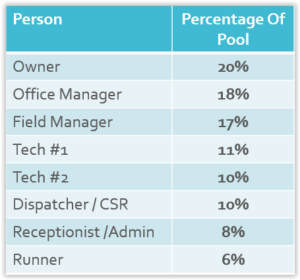By Tom Grandy, Founder

When is the best time for a tooth to break off? Friday dinner was certainly not my first choice. The good news was that I was not in any pain. The following Tuesday I had an appointment with my dentist. Our dentist is amazing but very expensive. Over the years I am confident we have bought him at least a late model used car for one of his kids!
My appointment was at 10:30 AM to look at my broken tooth. The dentist then suggested we cap it today if I had the time. I did have time and he proceeded to take an x-ray of my tooth. His comment was quite insightful. “We don’t want to put a roof on the house if the basement is on fire.” Translated, is the tooth solid with no decay? It was, so the process began.
He videoed my entire mouth which ended up on the computer screen right next to me. He then used his 36 years of training to customize my tooth until it fit perfectly in shape and size. A pin was installed in the middle of my existing tooth for added strength to bond the cap. Once the shaping and fitting process was completed the image was sent to a lathe with a block of material somewhat like porcelain but harder. It took about 30 minutes to “create” the new cap, followed by another 30 minutes of “hardening process”, raising the temperature to 1,800 degrees to harden the cap.
The next step was to color match the new cap to the rest of my teeth. He would gradually darken the new cap with each step getting closer to the perfect color. Once perfected the final fitting process began. The cap was placed in my mouth, taken out and sanded, then refit. After perhaps a dozen trips in and out of my mouth it felt fine.
The dentist then placed the new cap on and handed me a mirror, before permanently cementing it in place. He asked me what I thought of the color match. It looked perfect to me but to him it wasn’t quite right. He offered to make a totally new cap at no expense to me. However, I thought it looked great, so he permanently placed the cap in my mouth.
Two hours later I walked out the door after having paid the bill. By the way, they offered a 5% discount if payment was made on the day of service…which I took advantage of.
Was it expensive? Absolutely! It was nearly $1,600 after the discount. Was I a happy camper? Yes indeed!
I wasn’t paying $1,600 for his two hours of time. I was paying for his 36 years of experience, the huge investment he had made in technology, and the countless hours of training.
So, what’s the point? The point is to stop focusing on the hourly rate you are charging the customer. Help the customer understand the value of the job. Explain how you are unique, able to solve their problem better than any other company in town. If five companies can all do the same exact job, then price becomes the issue. However, if your company can be presented as “unique” it is no longer about price. Unique solutions demand higher prices and should!
How much was it worth to me to spend two hours in my dentist office and walk out with a new tooth? To me it was priceless.
Do your employees know the company policy on vacations, drug testing, tardiness, sick pay, health insurance, etc.? If not, it’s time to create a Company Policy Manual. The good news is that Grandy & Associates has developed a 96-page Company Policy Manual. It is in Microsoft Word so you can add, delete, or modify at will. The normal cost is $134.95 but this month only it’s only $99.95. Order today. Not happy. Return for a full refund, no questions asked.




